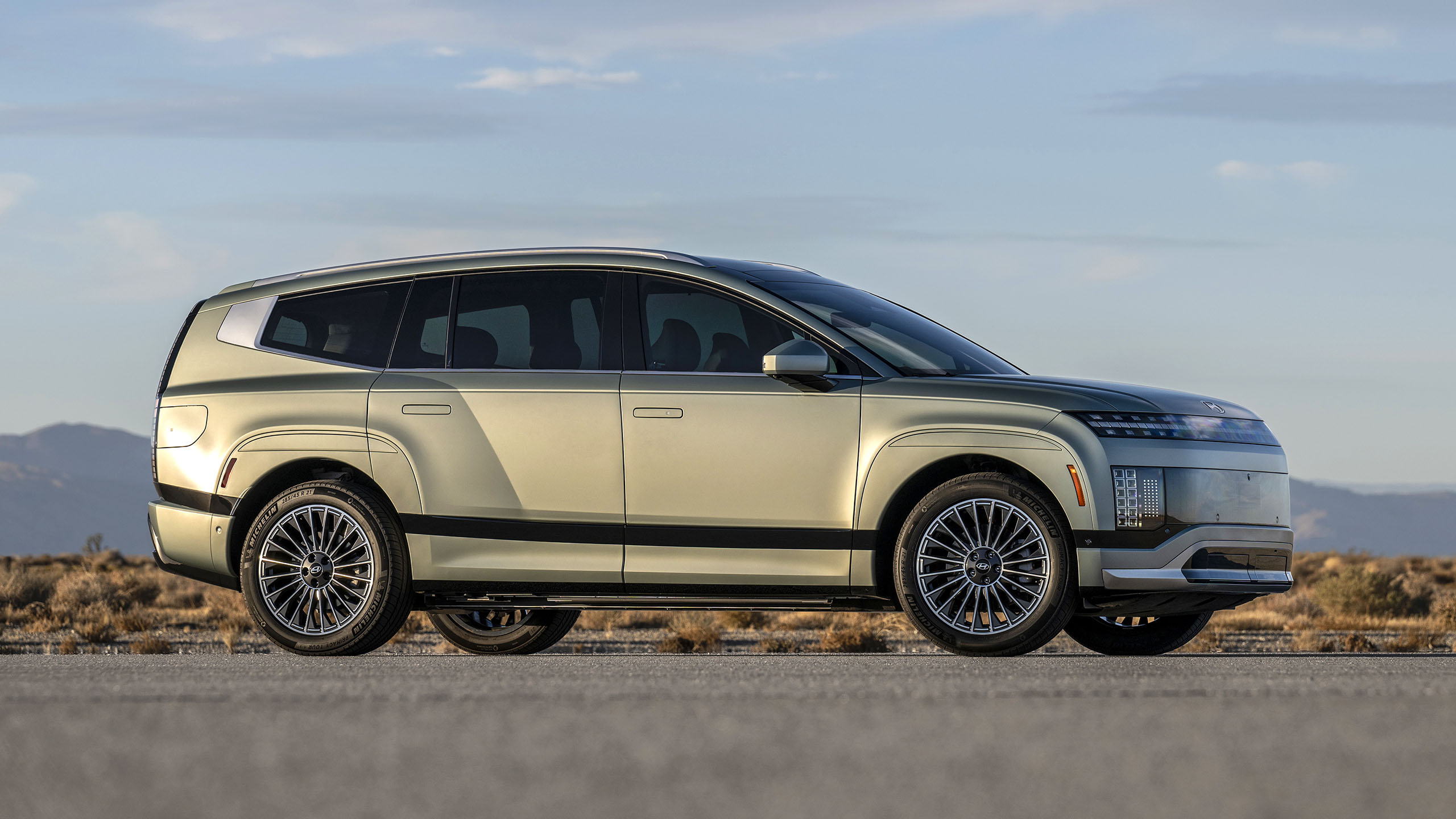

Three years ago, Hyundai shared a vision of what a big, electric SUV with the Ioniq 5’s design language could be. Originally called the Ioniq 7, that vehicle will hit showrooms next spring as the Ioniq 9. Tonight, Hyundai pulled the cover off the final product.
The overall proportions haven’t changed much in the transition to production. Hyundai’s largest electric SUV remains shaped like an aerodynamic box, but many of the finer design details have evolved over the past three years. The front end vaguely echoes the Ioniq 5‘s with square-shaped individual LEDs that create a distinctive look inspired by 8-bit video games, while the back end loses the concept’s glass panel in favor of a conventional hatch. The production model also features regular door mirrors, though buyers in some overseas markets can replace them with cameras.
Hyundai went to significant lengths to make the Ioniq 9 as streamlined as possible to maximize range. For example, you won’t even find an antenna on the roof. Instead, one antenna integrated into the windshield provides navigation and satellite radio connectivity, a second antenna embedded into the instrument panel powers the connected car services, and a third antenna in the hatch’s glass picks up the AM/FM radio.
Underpinned by the modular E-GMP architecture, the Ioniq 9 stretches about 199 inches long, 78 inches wide, and 70 inches tall. For context, it’s about three inches longer, an inch wider, and two inches taller than the V6-powered Palisade, yet its 123-inch wheelbase is roughly 10 inches longer.



The relatively long wheelbase gives the Ioniq 9 a spacious cabin with up to seven seats spread out over three rows. Hyundai packed a long list of clever features into the cabin, including a sliding center console, massaging “Relaxation” seats, swiveling second-row seats, and 100-watt USB-C charging ports that draw juice directly from the high-voltage battery pack. There’s even a sterilizer tray that allows passengers to disinfect small items, like wallets. Note that not all of these features will be available in the United States; market-specific equipment details haven’t been announced as of writing.
You’ll find a great deal of tech inside. Hyundai fused the 12-inch digital instrument cluster and the infotainment system’s 12-inch touchscreen into a single, curved unit that’s tilted toward the driver. The company wisely kept buttons for the climate control system and a volume knob, however.



Buyers will initially have three Ioniq 9 powertrains to choose from: Long Range RWD, Long Range AWD, and Performance AWD. The base model uses a single, rear-mounted electric motor rated at about 214 horsepower and 258 lb-ft of torque. The mid-range spec receives a second motor on the front axle to enable all-wheel drive, raising output to 308 horses and 446 lb-ft of twist. The range-topping version increases those figures to 429 and 516, respectively. Every member of the range, regardless of drivetrain, rides on a massive, 110.3-kilowatt-hour battery pack. Trims will include SEL, Limited, and Calligraphy at the top; we don’t yet know how they’ll map across the powertrains, but you can at least see how they’ll look in these photos.
The quickest member of the line-up is unsurprisingly the Performance spec, which takes 4.9 seconds to reach 60 mph from a stop. If driving range is your priority, the Long Range RWD model offers an EPA-estimated figure of 335 miles when it’s rolling on the standard 19-inch wheels. Hyundai claims that charging the battery pack from 10% to 80% takes 24 minutes when using a 350-kilowatt charger “under optimal conditions.”

SUVs should be able to tow and go off-road, and Hyundai stresses the Ioniq 9 ticks both boxes. Properly configured, the Ioniq 9 can tow up to 5,000 pounds, and it automatically detects the trailer’s weight to adjust the estimated driving range. Point the front end’s pixels off the pavement, and the available Auto Terrain Mode feature supposedly relies on artificial intelligence to read the road conditions and deploy power accordingly.
Hyundai dealers across the country will begin receiving the Ioniq 9 in the first half of 2025. Pricing hasn’t been announced yet.





Got tips? Send ’em to tips@thedrive.com